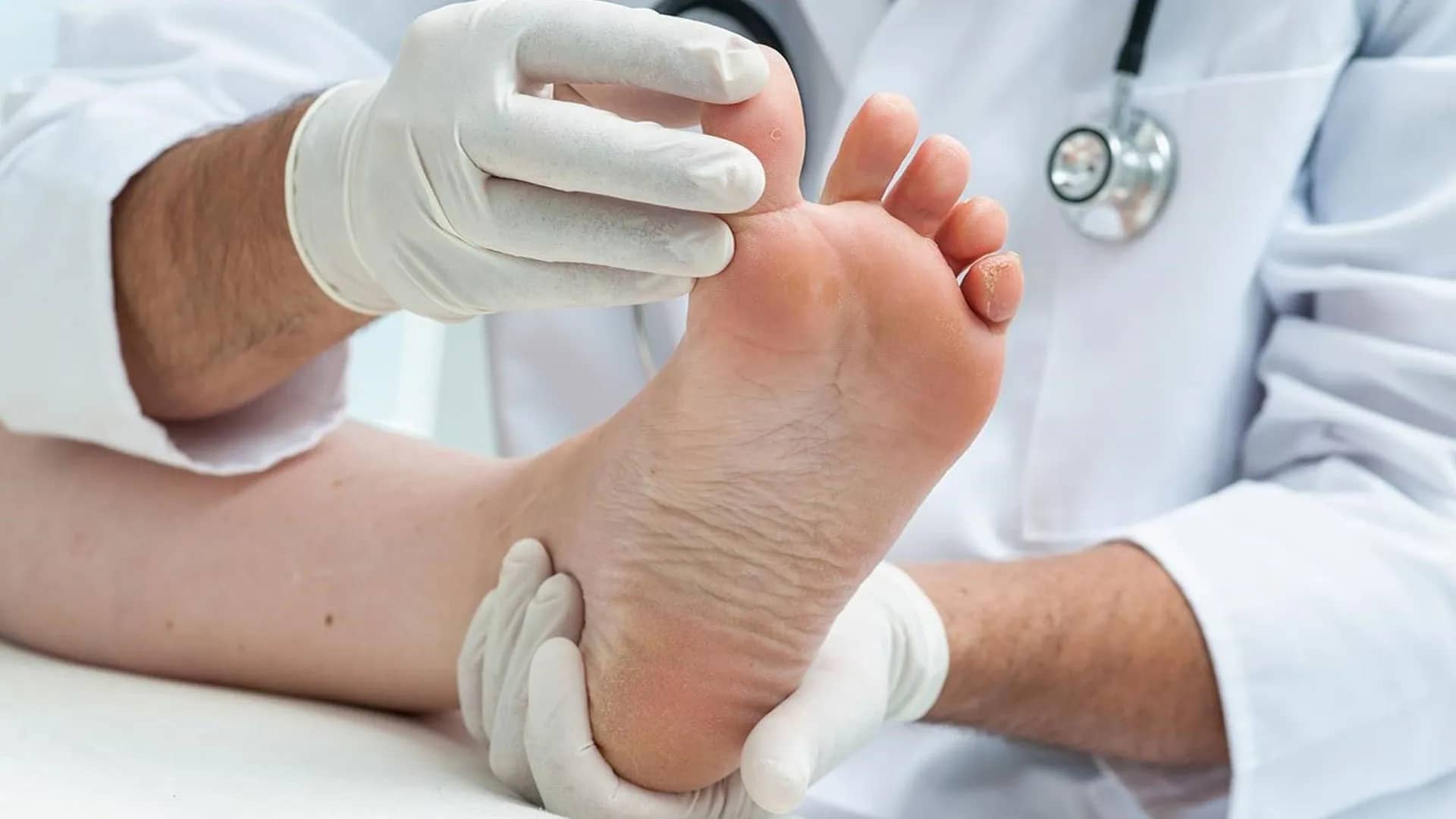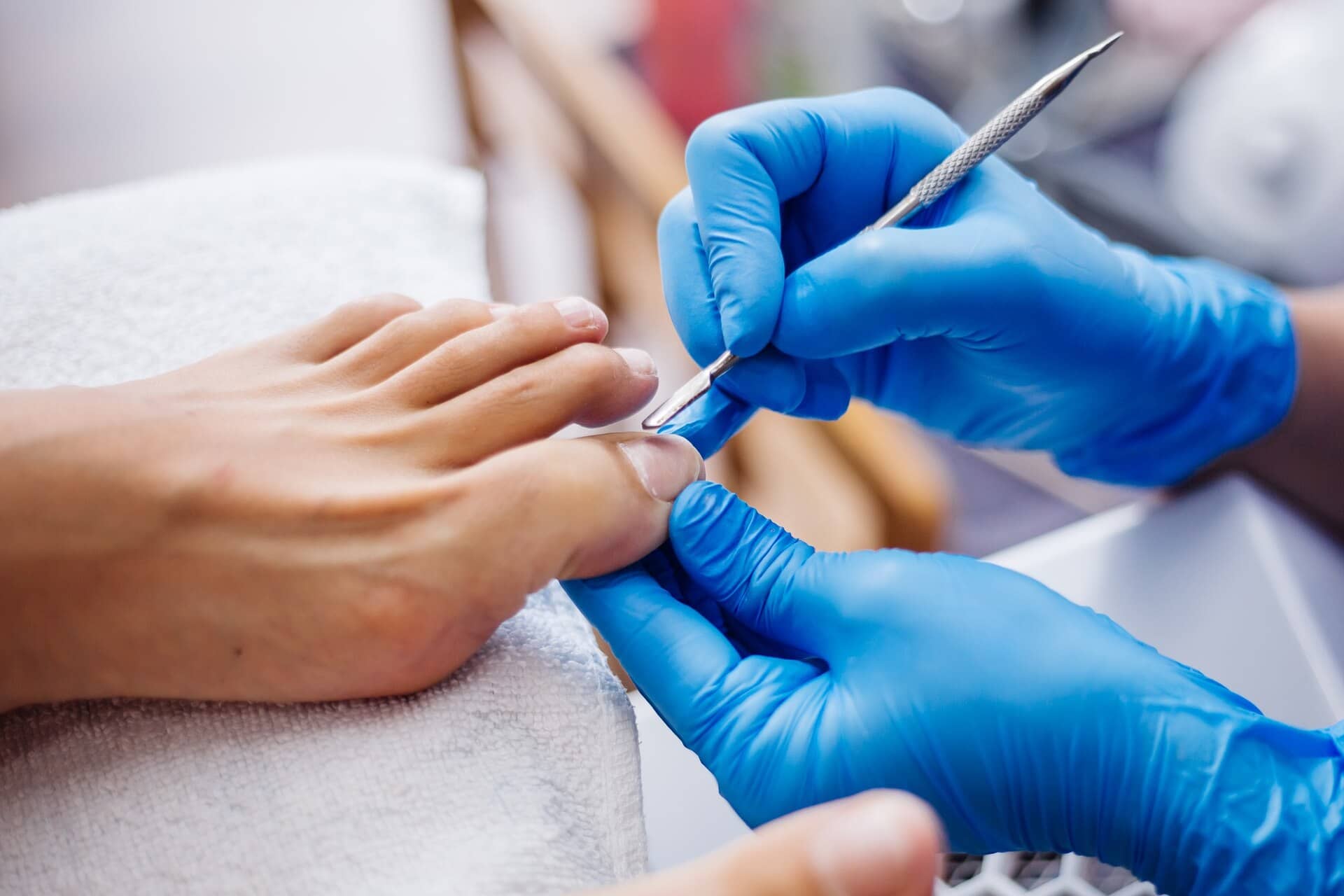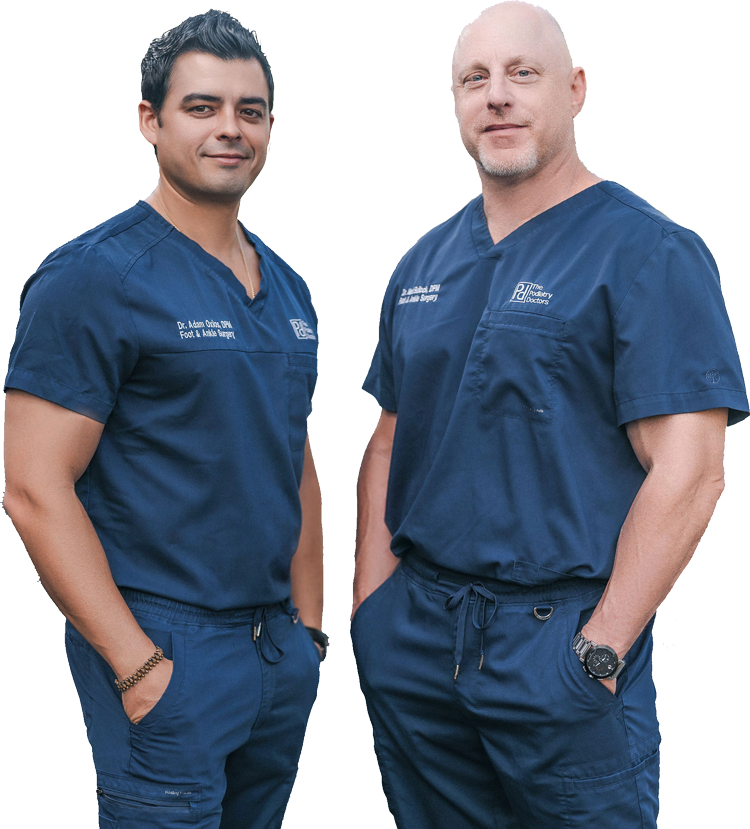
Fungal Nails
Nail fungus (onychomycosis) is a common condition which starts under the tip of your toenail. This may present as a white or yellow discoloration. As the fungal infection progresses, the nail may continue to discolor, thicken, crumble at the edge and take on a foul odor. If left untreated, the fungus can spread to multiple nails. Furthermore, the fungus can affect the areas between your toes and the skin of your feet, which causes a rash like appearance and intense itching. This is called athlete’s foot (tinea pedis).
Symptoms, although not always present may include painful ingrowing of the nail, itching around the nail plate and separation of the nail plate from underlying nailbed. Llifting of the nail may be asymptomatic however it is not uncommon for the lifted nail to catch on socks, bedsheets… which can cause the nail to rip off. Most of the time, this IS painful!
Definite diagnosis is done by sending a small clipping of the nail for microscopic analysis to determine the causative organism. Most times, the organism is a dermatophyte (common fungus) but yeasts and bacteria can also be responsible for the infection.
Definite diagnosis is done by sending a small clipping of the nail for microscopic analysis to determine the causative organism. Most times, the organism is a dermatophyte (common fungus) but yeasts and bacteria can also be responsible for the infection.
First-line treatment (which can be done at home) consists of keeping the feet dry and clean at all times and using over-the-counter medication. This has a relatively low success rate alone however if started early enough, it may clear the fungal infection. Other treatments include prescription strength topical medication, laser treatment (provided in our office) and oral medication. Blood work needs to be performed prior to starting oral medication to monitor liver function. Keep in mind, all of these treatments take months and multiple applications to clear the infection. As a final option, an in-office procedure can be performed to remove the nail entirely (done under local anesthesia). For the weeks/months following the procedure, a topical medication is applied directly to the nail bed to get rid of the underlying infection.

Ingrown Nails
An ingrown toenail (onychocryptosis) is a painful condition where the edge of the toenail (one edge or both) curve down into the skin. Many times, the nail can pierce the skin causing pain and an increased risk for infection. In the case of diabetics or people with poor circulation, these infections can become severe and even life threatening.
Causes for ingrown toenails include shoe wear, dystrophic/fungal nails, trauma, improper cutting of the nail and sometimes genetics… “Hey doc, my father and grandfather get ingrown toenails all the time”.
Initial symptoms include redness, swelling of the nail border and pain with pressure. Eventually, as the ingrown nail progresses, the body will begin to form “proud flesh” over the nail border (proud flesh is granular, moist tissue that bleeds very easily) and if left untreated an abscess can begin to form. This may lead to a host of much worse problems including bone infection and the need for more invasive surgery.
Before seeing a podiatrist, patients may care for their ingrown toenails in an attempt to prevent progression of the issue. I suggest alternating between Epson salt foot soaks (warm water and Epson salt) and soapy water foot soaks (warm water and soap) … emphasis on warm, not HOT. The Epson salt bath will help draw out and loosen the dry blood/puss, and the soapy baths will help keep the bacteria at bay.
Once in the office, the podiatrist will anesthetize the toe (so that no pain is felt during the procedure) and the offending portion of the nail will be removed. The toe is then wrapped and the patient is seen three to four days later to ensure proper healing pursues. This procedure is successful 90-95% of the time. Based on the doctor’s discrepancy, he/she may decide to introduce a chemical to the nail matrix (the portion responsible for growing out the nail) to prevent the issue from recurring. I highly recommend this if your ingrown nail has been a repeating problem for you.



